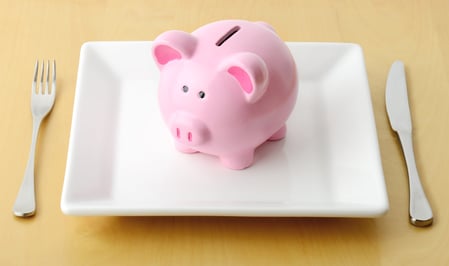 One of my favorite things to do during summer in Indiana is to visit the various farmers’ markets around town. As a dietitian I am a sucker for the fresh fruits and veggies, but I also love the homemade desserts, candles, pasta, kettle corn, fresh flowers, and other wonderful items you can find.
One of my favorite things to do during summer in Indiana is to visit the various farmers’ markets around town. As a dietitian I am a sucker for the fresh fruits and veggies, but I also love the homemade desserts, candles, pasta, kettle corn, fresh flowers, and other wonderful items you can find.
Why Should You Shop at Your Farmer's Market?
Here are my top 5 reasons why visiting your town's farmer’s market is a must.
- Support the local community. Since the produce is grown and purchased locally, the money remains in the community and stimulates the economy. Also, when you shop at the farmers’ market you are cutting out the middle man, and the product is generally less expensive than if you purchased it in the grocery store.
- Eat foods that are in season. Farmers’ market produce is picked ripe and sold soon after picking. Supermarket produce, on the other hand, can take up to two weeks to travel from the farm to the store, even when it is in season. The produce tastes richer and more flavorful and the nutrients are better retained. This handout for Indiana allows you to see which produce is in season so you can plan ahead for meals and shopping on your next outing. If you don’t live in Indiana, check with your local government websites to see if they have a similar calendar.
- It’s good for you. The average American eats 4.4 servings of fruits and vegetables per day. The current recommendations are 9 servings per day. Picking up multiple servings of fruits and veggies and incorporating them into recipes, meals, and snacks is a great way to get closer to the 9-serving-per-day-goal. This will guarantee you are meeting your recommended vitamin and mineral nutrition requirements, increasing your daily fiber intake, and acquiring cancer-fighting antioxidants. Locally grown produce is also lower in pesticides and chemicals.
- You can talk to the farmers who grew the food you are about to eat. You can meet the farmers who grew your food, ask when it was picked, how it was grown, and ways to prepare it. When else do you get the opportunity to learn so much about what you are putting in your mouth?
- There is certain to be one that fits your location and schedule. I love being able to go to the local farmers’ market close to work on my lunch break mid-week to grab items to get me through the rest of the week. Saturday mornings it’s off to the farmers’ market closer to my house to purchase goodies for the weekend and first part of the next week. To find out farmers’ markets close to you, check out the Farmers Market Directory on the USDA website.
An Inexpensive Path to Healthy Eating
Whether you are picking up items for tonight’s dinner or for the whole week, the farmers’ market is an inexpensive, healthy alternative to the grocery store that enables you to participate in eating local. Try to get there early to get the best variety and options. Not all vendors accept credit cards, so be sure to have cash on hand. Finally, bring along your own reusable grocery bag to put all of your goodies in so it is easier to carry home your fresh, delicious finds.


 One of the biggest reasons people give as to why they aren’t eating healthy is the cost of foods,
One of the biggest reasons people give as to why they aren’t eating healthy is the cost of foods, 